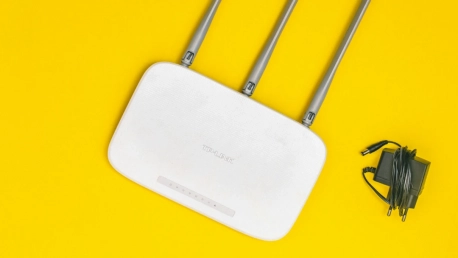A serious cybersecurity threat has emerged that affects users of TP-Link Archer AX21 routers. These devices contain a significant flaw that could potentially allow them to be taken over remotely. If exploited, this weakness could transform routers into components of a botnet – a collection of internet-connected devices that have been compromised by malware. Botnets are notorious for their ability to carry out disruptive actions, such as sending massive volumes of unsolicited messages or launching coordinated attacks that overload websites, known as DDoS attacks. It’s essential to be aware that your router could be vulnerable to this kind of exploitation, leading it to operate under the control of cybercriminals without your consent. This situation poses considerable risks to the security and integrity of your digital infrastructure. Users of these routers must stay vigilant and take appropriate steps to shield their devices from such unauthorized and malicious activities. The reality of the situation underscores the importance of cybersecurity vigilance and the need for continuous monitoring and protection of our internet-connected assets.
The Persistent Threat of CVE-2023-1389
In December of the previous year, researchers unearthed a dangerous flaw registered as CVE-2023-1389 that could let attackers administer arbitrary commands on devices. This kind of access gives them potential control over your router, putting your personal information and digital safety at risk. Although a patch for this vulnerability was released in March, the problem persists. Countless TP-Link routers remain unpatched, offering a gateway for attackers to continue their nefarious activities. The simplicity of these attacks and the broad attack surface presented by widely used IoT devices like home routers make this a pressing issue.Botnets such as the infamous Moobot, Mirai, and others, widely known for their role in some of the most extensive and formidable DDoS attacks in recent history, are exploiting these exposed routers. Utilizing these botnets, attackers can coordinate and amplify their attacking force, striking against individuals, businesses, and even nations with overwhelming Internet traffic that can bring operations to a grinding halt. This exploitation has been predominantly observed by security firms like Fortinet, which have noted such incidents in various locations, particularly in Eastern Europe, indicating a trend that is geographically widespread but still concentrated in areas with large numbers of unpatched devices.
Importance of Timely Updates
The persistent threat of botnets attacking routers underscores the critical nature of IoT device security. To mitigate these risks, it’s essential for users to consistently update and secure their network devices. Neglecting available security updates leads to increased susceptibility, allowing cybercriminals to enlist routers into their botnets. A common challenge is that many users overlook the need for regular updates due to unawareness or underestimation of the risks. Cybersecurity experts stress the importance of proactive measures to defend against these threats. Users need to maintain alertness and make their routers secure frontlines against cyber intrusions, not merely access points for connectivity. The call to action is clear: prioritizing cybersecurity and frequent updates of devices is paramount. Individuals securing their devices contribute to the collective defense, thereby creating a more resilient Internet environment, protecting against the damage inflicted by botnets.









